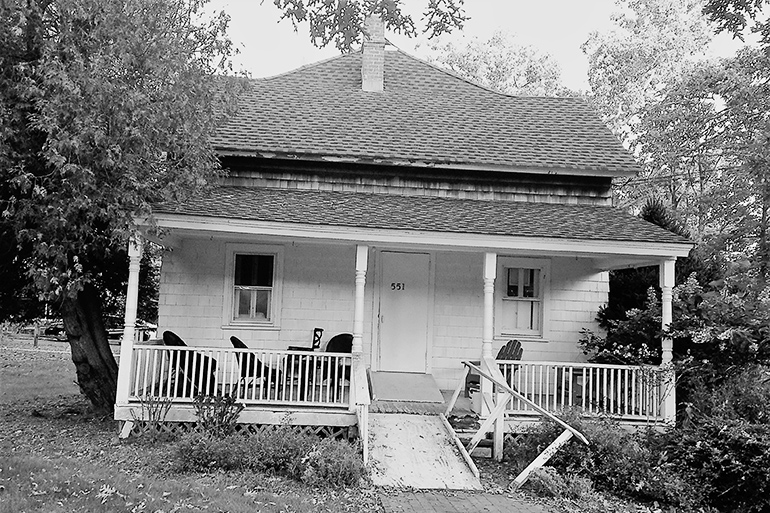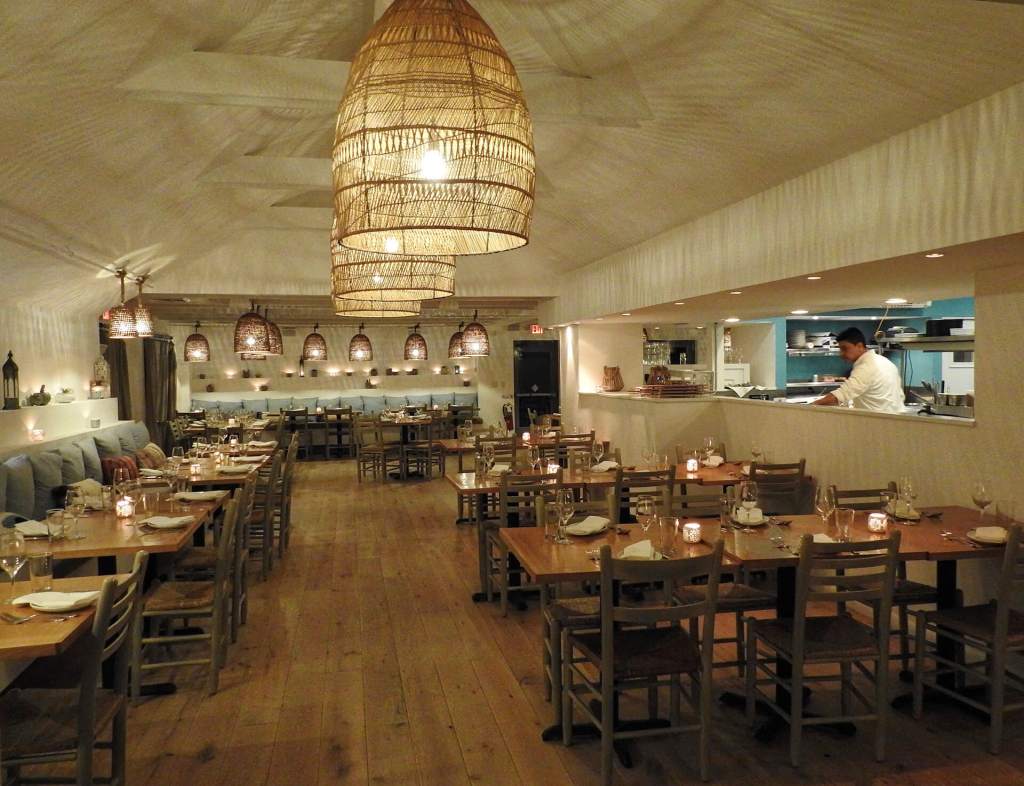About Race: Interest Surges in Hamptons About Issues Facing African-Americans

During the past six weeks of this summer, a great number of events, lectures, fundraisers, films, lunches and dinners I have attended in the Hamptons have been about one thing—the state of race relations, as it concerns African-Americans here and across the country.
By this article, I do not intend to let this pass unnoticed. In my 60 years monitoring the Hamptons, I have never seen this happen at this level before, not 10 years ago, not last year, not ever.
I’d like to mention them in no particular order.
I attended a dinner party under a tent at Loida Lewis’s oceanfront mansion on Lily Pond Lane in East Hampton.
About 200 people, including Mayor David Dinkins, were there to support All Star Code, a nonprofit computer science education organization founded by Lewis’s daughter Christina and focused on helping talented black and Latino high school students.
Funds raised provide summer internships for 150 kids at companies such as Google, Spotify and Goldman Sachs to introduce them to the tech and finance worlds. Just outside the tents, guests walked along silent auction tables that showcased signed T-shirts, baseballs and photographs of successful athletes and celebrities.
Some included quotes from these individuals. Lebron James: “Dream as if you’ll live forever. Live as if you’ll die today.” Tiger Woods: “Days when you don’t have it, you don’t mail it in, you grind it out and give it everything you’ve got.” There are three mottos for All Star Code: Dare greatly. Celebrate failure. Tell your story.

The documentary film Killer Bees premiered at select theaters nationwide two weeks ago. It is about the Bridgehampton Killer Bees basketball team and their annual quest for a state championship. (During the last 38 years, they have won 9.) The film was directed by Orson and Ben Cummings, who went to that school when they were young. The majority of the team, as well as the school, is African-American.
The film, besides showcasing team spirit, also highlights the contrasts between the largely white and wealthy neighborhood that Bridgehampton has become with the poorer and largely segregated ethnic group who live on the Bridgehampton Sag Harbor Turnpike and whose children attend that school.
I went to a lunch and fundraiser held at artist Robert Wilson’s Watermill Center on Water Mill Towd Road to benefit the Bridgehampton Child Care and Recreational Center on the Turnpike. Called “Jazz for Jennings,” the lunch was hosted by Kayce Jennings, widow of TV news anchor Peter Jennings, and included a jazz concert by composer and arranger Evan Sherman (Lincoln Center, the Rainbow Room, etc.) and half a dozen other celebrated jazz musicians from around the country.
The child care center serves the black and Hispanic community from a worn-out 120-year-old headquarters that needs renovation and expansion (final cost $1.2 million). On its six-acre campus, teachers and coaches monitor tennis, basketball, soccer, SAT test prep, music, dance, theater and chess. Its Scrabble team went to the national championships this year.
I attended another luncheon to benefit the Child Care Center prepared by Chef Jean George Vongerichten on the porch and patio of the Topping Rose House in Bridgehampton. Bonnie Cannon, the director of the center for the last eight years, talked about the center’s activities and how the center was founded. In 1949, two children died when a migrant worker camp on a potato farm caught fire.
It happened during the potato harvest when the mothers had to join their husband to bring the harvest in quickly and so, on that day, the children were left alone. As a result of the tragedy, the potato farmers, all from the white community, arranged for the sale of a small six-acre dirt farm on the turnpike—farmhouse, barn, outbuildings, sheds etc.—to the black community for a child care center so this would never happen again.
I attended an interview at the John Drew Theater on a Friday afternoon that drew a packed audience. The interview was with Khalil Gibran Muhammad, a professor of History, Race and Public Policy at Harvard’s Kennedy School. He is also the Suzanne Young Murray Professor at the Radcliffe Institute for Advanced Studies. The interview was conducted by his friend Ken Miller, a venture capital investor who runs the Ken Miller Capital asset management firm.
Dr. Khalil is an expert on race, democracy, inequality and the growth of criminal incarceration in America. He spoke of Jim Crow, which the South created to replicate slavery after the Civil War. In the cotton fields, they now worked as “sharecroppers,” which meant that at the end of the season their bosses would acknowledge the 14-hour, 7-day-a-week work days they put in without pay, and if the boss declared it resulted in a profit, which it often did not, he would give a small share to the “sharecroppers.”
Blacks could be hanged for talking to a white woman. Blacks would have their shacks burned if they tried to vote. They had to step off a sidewalk when whites approached, speak only when spoken to, agree with everything any white person said, allow the bosses to have their way with their wives and daughters, use separate schools and hotels and facilities and be aware they could be tortured and hung for any accusation made by any white person.
Jim Crow was administered by the state courts and enforced by the Ku Klux Klan for nearly 100 years until the Civil Rights laws of 1964, though in subtle ways, its effects linger.
Khalil urges blacks to speak out and make their voices heard.
I attended a lawn party in Springs at the home of Julie Ratner and Sam Ashkenazi. Julie is best known for having founded the annual 5K Ellen’s Run in the Hamptons. It raises money for breast cancer research. At this party, however, she had invited everyone to come, pledge money and hear a spellbinding speech delivered by the Reverend Dr. William Barber II, who has been described by The Nation magazine as “…one of the most gifted organizers and orators in the country today.”

Barber, a black preacher from North Carolina, led a series of protests in that state last year to demand the overturning of recent new racist state laws pushed through by the legislature to advance Jim Crow practices and cut education, health and welfare. His demands received nationwide media coverage. Dr. Barber rivals Martin Luther King in his passion, command of the facts, persuasion and call to nonviolent action.
Guests listened in fascination as he spoke, among them local politicians, one of whom was the Democratic challenger for this community’s Congressional seat. People held up cell phones to record some of what Barber said:
“We cannot discuss the pathology of racism when we know it when it happens. Racism is what these appointed racist federal judges do quietly while we have the media distracting us by the tweets.
“We have 13 million children in poverty. Thirteen million. In the richest nation in the world. We have 62 million Americans working every day that do not make a living wage, 37 million people without health care….”
A few weeks ago, Sag Harbor Village decided to hold a public hearing to consider whether the state should be asked to give Landmark Designation to the adjacent sections of Nineveh, Sag Harbor Hills and Azurest as National Historic Sites in that Village. These three sections were where African-Americans settled when buying property in that town after World War II.
They were forced to do that because of the “no blacks or Jews” requirements in local real estate contracts at that time. Those requirements are now gone, but recently wealthy summer people have begun buying property in those still largely black sections to build large mansions.
Author Colson Whitehead wrote a best seller called Sag Harbor inspired by the time he spent as a boy vacationing with his family in Nineveh. He won the National Book Award in 2016 and the Pulitzer Prize for Fiction in 2017 for The Underground Railroad.
Further to this, on August 4, historian Andrew Kahrl spoke at Guild Hall in East Hampton about the need to protect those three sections of Sag Harbor. He is the author of This Land of Ours and Free the Beaches and is currently an Associate Professor at the University of Virginia.
During this time, new films about the African-American experience have been playing at local movie theaters. Sorry to Bother You is about a black man who works in a sales call center speaking with a “white voice” and what happens to him because of it. Now the movie BlacKkKlansman, which had a premiere in East Hampton, is making the rounds. It’s self-explanatory.
At a dinner at the elegant home of Sivia Loria in Southampton, I sat next to Bill Pickens III, a longtime resident of Sag Harbor and a vigorous spokesperson for the black community. Alarmed by Donald Trump—who, while giving lip service to the black community, is turning a blind eye as bigots attempt to revive Jim Crow—he gave me a poem he’d written.

Random Musings & Politickles
- There’s Punch and Judy, then Trump and Rudy.
- We have five living presidents and one lying one!
- Scott Pruitt is the Administrator of Environmental Rejection!
- Are we the United States or the Untied States?
- Are we America First, or America Worst?
- Who is Kim Jong UNhinged?
- Contrast the character of Obama versus the caricature of Trump!
- The Donald and his minions want to reduce Barack to a footnote of presidential history-sort of an accidental president. Oh no, Barack was a worldwide headline, who captivated and motivated millions.
- Are we now facing DEMOCKERY in Action?
- Trump is consistently inconsistent! His career goes from ad hoc to in hock! And he promotes a creed of greed. And for us, Charlottesville was a teaching experience—for Trump it was a torching one!
- Rudy Giuliani is America’s mostMIRED mayor.
- And have you noticed Trump’s signature—it reads like a Richter scale of surges and urges, peaks and valleys!
- Trump is conducting both a TRADE war and a TIRADE war!
- Trump represents three P’s: Petty, Petulant and Prurient!
- And he is better at sexual DALLIANCES than he is at serious ALLIANCES!



